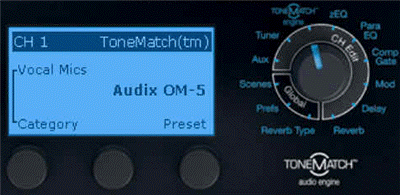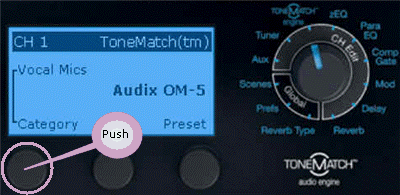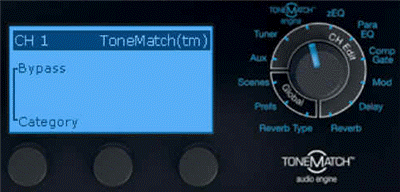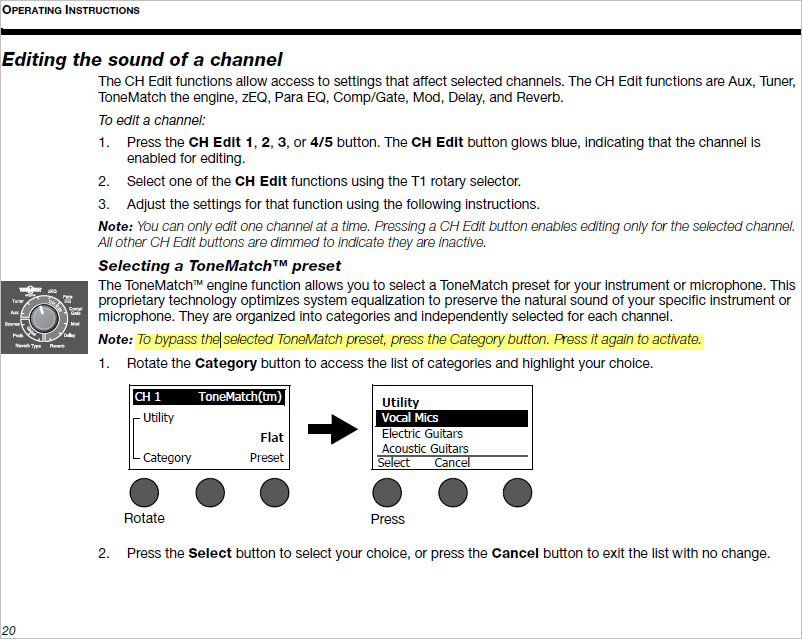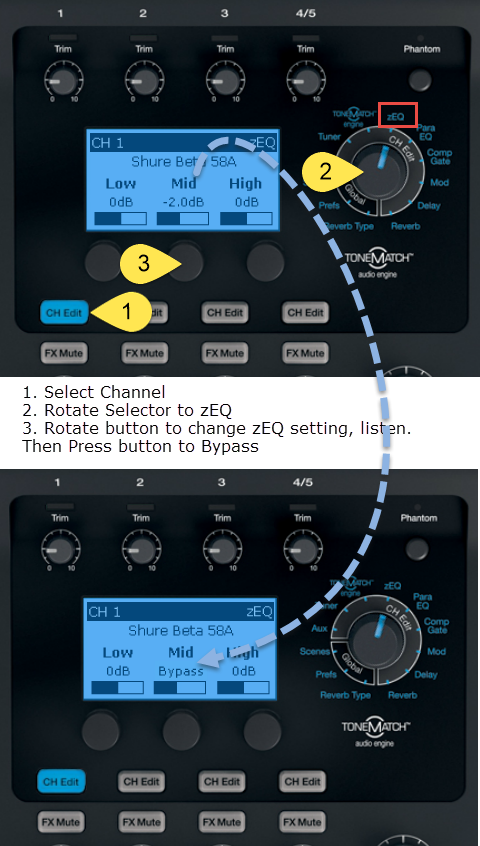Difference between pages "PS1 Power Stand / Bass Line Out" and "T1 ToneMatch® Audio Engine / Bypass"
m |
m (ST moved page T1 ToneMatch® Audio Engine / Bypass to T1 ToneMatch® Audio Engine / Bypass) |
||
| Line 1: | Line 1: | ||
| − | + | <noinclude>__TOC__</noinclude> | |
| − | + | === Introduction to Bypass === | |
| − | |||
| − | |||
| − | |||
| − | |||
| + | <blockquote> | ||
| + | Hi Folks, | ||
| + | At the recent L1 users conference in Colorado, we found out that a high percentage of T1 owners did not know about the BYPASS feature that's employed in many places in the T1. | ||
| + | The BYPASS feature is extremely useful in deciding if a particular adjustment is giving you the sound you want. It's a form of an A/B switch. | ||
| − | + | For example, if you want to hear how a particular ToneMatch preset sound on and off, you would use bypass. If you wanted to hear how a particular reverb sounded you could turn it on and off, on and off. And so on. Most effects have this valuable feature. | |
| − | < | + | As an example, here's the screen after you've chosen a Tonematch preset for Channel 1. In this case, I've chosen the preset for an Audix OM5. |
| − | + | </blockquote> | |
| − | + | ==== Tutorial ==== | |
| + | [[Image:T1Bypass01.png]] | ||
| + | <blockquote> | ||
| + | To go into bypass mode, just click on the rotary-push knob below the word "category" on the screen. | ||
| + | </blockquote> | ||
| − | + | [[Image:T1Bypass02.png]] | |
| − | < | + | <blockquote> |
| − | + | Here's what the screen looks like after you push the button. | |
| − | + | </blockquote> | |
| − | + | [[Image:T1Bypass03.png]] | |
| − | |||
| − | |||
| − | + | [http://bose.infopop.cc/eve/forums/a/tpc/f/7521050644/m/6611031105 Quick Tutorial on Highly Useful BYPASS Feature...] - Ken-at-Bose | |
| − | |||
| − | [ | ||
| − | + | [[Image:T1Bypass04.png]] | |
| − | + | === What Happens When You Bypass a Preset? === | |
| + | :What happens when you select a channel ‘Bypass’ button on the T1® audio engine? | ||
| − | + | :Pressing the ‘Bypass’ button on a channel will change it’s current ToneMatch® preset to the generic “Utility Flat” preset. This enables you to audition between specific ToneMatch® presets and the ‘Utility Flat’ setting, helping you decide which preset you will ultimately choose. | |
| − | + | :In contrast, the key frequency adjustments for [[zEQ]] do not change when the ToneMatch® preset is ‘Bypassed’. For instance say that you originally had a ‘Kick Drum’ preset selected and then pressed ‘Bypass’, the key [[zEQ]] adjustment points would still remain focused on fine tuning a kick drum. | |
| − | |||
| − | |||
| − | |||
| − | + | Source: [http://bose.infopop.cc/eve/forums/a/tpc/f/7521050644/m/6611031105?r=141105367#141105367 Neil-at-Bose] | |
| − | === | + | == Bypass Reverb == |
| − | |||
| − | |||
| − | |||
| − | |||
| − | |||
| − | + | {{:T1 ToneMatch® Audio Engine / zEQ Bypass}} | |
| − | |||
| − | + | == Bypass zEQ == | |
| − | + | {{:T1 ToneMatch® Audio Engine / zEQ Bypass}} | |
| − | {{: | ||
| − | |||
| − | |||
| − | |||
| − | |||
| − | |||
| − | |||
<noinclude> | <noinclude> | ||
---- | ---- | ||
| − | <references/> | + | <references /> |
| − | [[Category: | + | [[Category:T1]] |
| − | [[Category: | + | [[Category:Bypass]] |
| − | + | ||
| − | |||
</noinclude> | </noinclude> | ||
| − | |||
Revision as of 04:29, 26 March 2017
Contents
Introduction to Bypass
Hi Folks,
At the recent L1 users conference in Colorado, we found out that a high percentage of T1 owners did not know about the BYPASS feature that's employed in many places in the T1.
The BYPASS feature is extremely useful in deciding if a particular adjustment is giving you the sound you want. It's a form of an A/B switch.
For example, if you want to hear how a particular ToneMatch preset sound on and off, you would use bypass. If you wanted to hear how a particular reverb sounded you could turn it on and off, on and off. And so on. Most effects have this valuable feature.
As an example, here's the screen after you've chosen a Tonematch preset for Channel 1. In this case, I've chosen the preset for an Audix OM5.
Tutorial
To go into bypass mode, just click on the rotary-push knob below the word "category" on the screen.
Here's what the screen looks like after you push the button.
Quick Tutorial on Highly Useful BYPASS Feature... - Ken-at-Bose
What Happens When You Bypass a Preset?
- What happens when you select a channel ‘Bypass’ button on the T1® audio engine?
- Pressing the ‘Bypass’ button on a channel will change it’s current ToneMatch® preset to the generic “Utility Flat” preset. This enables you to audition between specific ToneMatch® presets and the ‘Utility Flat’ setting, helping you decide which preset you will ultimately choose.
- In contrast, the key frequency adjustments for zEQ do not change when the ToneMatch® preset is ‘Bypassed’. For instance say that you originally had a ‘Kick Drum’ preset selected and then pressed ‘Bypass’, the key zEQ adjustment points would still remain focused on fine tuning a kick drum.
Source: Neil-at-Bose
Bypass Reverb
To bypass a zEQ setting on your T1®
Use this to compare the sound with and without a zEQ setting to really hear what the zEQ is doing to the sound in the room.
Bypass zEQ
To bypass a zEQ setting on your T1®
Use this to compare the sound with and without a zEQ setting to really hear what the zEQ is doing to the sound in the room.
